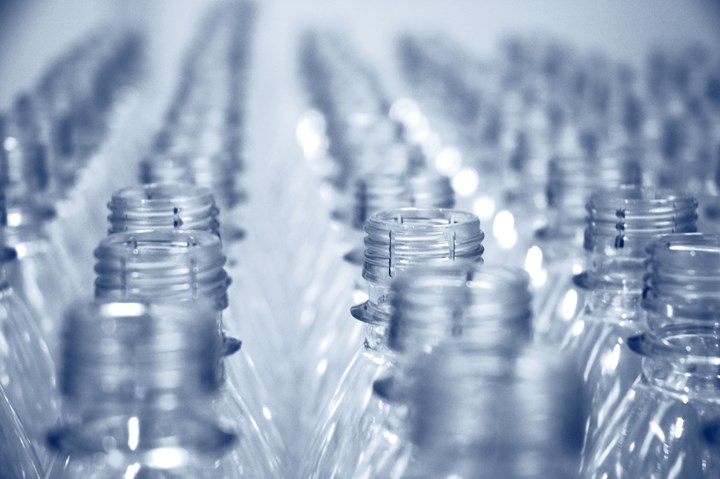Life Cycle Assessment Describes Advantages of PET Containers Over Glass and Aluminum
Lighter impacts from PET than glass or aluminum across impact categories and disposable container sizes.
In a lifecycle assessment conducted for NAPCOR by Franklin Associates, PET containers outperformed glass and aluminum in minimizing greenhouse gas emissions and other environmental impacts. Analyses compared the potential global warming, acidification, eutrophication, ozone depletion, and smog formation impacts of each disposable container type.

Disposable containers from PET outperform disposable glass and aluminum containers in most sustainability categories, according to a recent report.
Photo Credit: Getty
Based on delivery of 1,000 gallons of product, PET containers had significantly lower impacts in global warming, acidification, and smog formation. Differences in eutrophication potential were considered too small to be meaningful, and differences in ozone depletion potential favored glass and aluminum containers.
The report also looks at energy use (both cumulative and non-renewable), solid waste generation, and water use. Again, PET containers shone, with much lower impacts in most categories and a virtual tie with aluminum in the water consumption category.
Sensitivity Analysis Reveals How Choices Impact Results
The report includes several sensitivity analyses that show how various choices influence the outcomes of the study. One example is how the study treats recycling.
Containers for which the recycled content is lower than the recycling rate, as is generally the case with PET, are net producers of recycled content, and receive credit for virgin material displaced by this extra recyclate. The opposite is true for aluminum cans. For comparison, the sensitivity analysis offers alternative results based on an approach that bounds the system at material extraction to disposal, cutting out the recycling system.
Sensitivity to other assumptions and metrics such as recycling rates, container weights, and delivery units (per gallon vs. per container) are also evaluated.
Commentary from a peer review panel helped drive sensitivity analysis. In accordance with ISO standards, critical comments, along with responses and resolution, are included in the report.
Updated Report Reflects a Changing Container Industry
The report is the first of its kind in over a decade. “It was important to update it to reflect advancements in the beverage bottle industry,” says Laura Stewart, executive director at NAPCOR. Advancements include more efficient production processes, refinements to container and secondary packaging design, and changes to the energy generation mix.
“We’re proud of the work and rigor that went into this study and we are proud of the result. When you choose a PET bottle, whether it’s water or soda, you’re actually doing better for our environment from a climate change perspective,” says Stewart.
Related Content
-
Automotive Awards Highlight ‘Firsts,’ Emerging Technologies
Annual SPE event recognizes sustainability as a major theme.
-
Young Stretch-Film Processor Bets on Nanolayers
Going up against companies with as much as double its capacity, young stretch-film processor Zummit believes that new technology — notably 59-nanolayer films — will give it a competitive edge.
-
Medical Molder, Moldmaker Embraces Continuous Improvement
True to the adjective in its name, Dynamic Group has been characterized by constant change, activity and progress over its nearly five decades as a medical molder and moldmaker.











 (2).jpg;maxWidth=300;quality=90)




